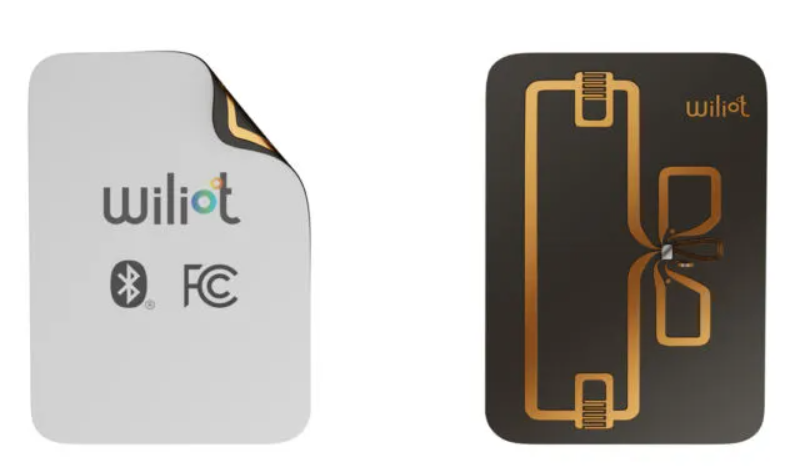Bluetooth SIG plans to add new IoT capabilities
2022-12-27 / News / 14003 Sees / 0 CommentsThe Bluetooth Special Interest Group (SIG) has a new focus on IoT, specifically on bringing connected Bluetooth shelf labels and tags to retail and other settings. According to Ken Kolderup, chief marketing officer at the SIG, the organization is making plans for a Bluetooth Low Energy (BLE) standard for electronic shelf labels and discussing what standards ubiquitous electronic BLE tags might need. These are among several efforts the SIG is taking to ready the Bluetooth radio protocol for a larger market.
The SIG’s focus on retail also showcases a compelling partnership between two companies that I think will speed up use of IoT sensors in retail settings and which I think we should start talking about today.

Earlier this year, I wrote about Energous and Wiliot working with an integrator to bring Energous’ over-the-air (OTA) power transmitters and Wiliot’s battery-less Bluetooth tags to an Australian supermarket. The store places the Bluetooth tags onto goods so it can track inventory in real time, prevent theft, and provide condition monitoring. The thousands of deployed tags get constant power from Energous transmitters hung on the ceiling.
This use case has an enormous future, according to the SIG. Kolderup told me he expects to see both exponential growth in the market for Bluetooth radios thanks to changes in economics provided by cheap Bluetooth tags like what Wiliot offers as well as the availability of consistent wireless power. And he’s not the only one.
Steve Statler of Wiliot calls this the beginning of an era of “ambient IoT.” Unlike Amazon or Google, which use that phrase to mean a smart home that anticipates your needs, Statler is talking about hundreds of millions of sensors that will share data about their location and their environment with nearby gateways. Wiliot already has deals in place to make such tags cheaply, such as the one it signed earlier this year with Avery Dennison, which can now make Wiliot’s wirelessly powered Bluetooth tags for less than 10 cents each.
Cheap tags that don’t require batteries are only one element needed to make Statler’s ambient IoT vision a reality. Having a reliable source of power that doesn’t require changing a battery is another. That’s where Energous comes in. Energous received FCC approval this year for its OTA wireless power transmitters, and has a partnership to provide OTA power to Wiliot’s tags.
As Cesar Johnston, CEO of Energous, explained to me, the transmitters are placed around a building like wireless access points, and can provide power to hundreds of tags. In addition to Energous providing location and state information, it’s also interested in providing real-time pricing. And through partnerships with e-ink screen makers, that too is coming to fruition. Stores are already testing ways to update prices as much as 10 times a day.
“Now it’s not about batteries,” Johnston said. “It’s really just about how much energy do I need and when do I need it?” For him, Bluetooth tags or real-time e-ink pricing displays are only a small portion of the market for his company’s OTA power transmitters, which could also be used in home, industrial, and enterprise settings for powering any number of devices.
But in grocery stores, it’s Kolderup who envisions a store that can drop the price of expiring produce as it nears the end of its life. In the meantime, I see a future where toilet paper ahead of a snow storm becomes prohibitively expensive, or price matching across chains becomes instantaneous. In other words, this is a technology that is going to need some kind of oversight and debate over ethics.
With both of these use cases, there are still a few more elements that need to align. That’s where the Bluetooth SIG can play a role. Kolderup told me that, when it comes to OTA-powered sensors in retail settings, the SIG is considering a standard data format so tags from different systems will work together. It’s also considering some form of encryption so the data from those tags doesn’t leak everywhere. Other technical elements include some kind of standard for how to handle the energy harvesting that provides the tags with power. And should that take place over the 900 MHz spectrum? Or the 2.4 GHz spectrum?
Interoperability at the tag level and gateway level will be important, and according to Kolderup, retailers are already demanding it. As for the SIG’s efforts around electronic shelf labels, it has launched a working group to explore options and ideas for interoperability and standards. Kolderup said that the SIG saw sales of 150 million labels in 2022 and expects that number to reach 300 million in 2023. And this is only the beginning. Imagine if every label in each store you visit becomes electronic and capable of adjusting in real time. That’s a lot of labels.
Then imagine every item on those shelves also having a BLE-powered tag that can transmit its location and environmental data. Because that’s when we start seeing the Internet of Everything.
More about“eink,Bluetooth Special Interest Group (SIG),Bluetooth shelf labels and tags,”'s article.
The original address《Bluetooth SIG plans to add new IoT capabilities》